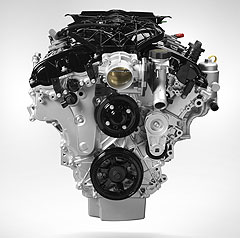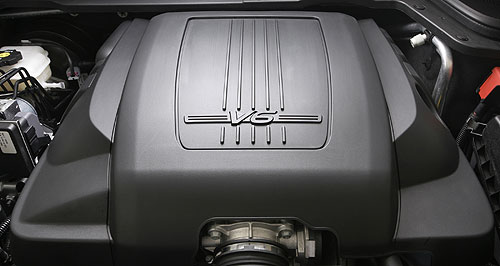Make / Model Search
News - HoldenHolden to boost V6 engine productionTurn up the volume: Holden's engine plant is back on two shifts. More exports and local growth leads to production lift at Holden’s V6 plant17 Nov 2009 HOLDEN has increased production at its Port Melbourne Global V6 engine plant to meet export orders and a predicted rise in Commodore sales. The company announced yesterday that it had gone back to a two-shift production regime after cutting back to a single shift in reaction to slumping local sales and reduced export demand in June. From this week, it is producing 440 V6 engines a day at the plant, up from 240-320 a day. Holden builds a 2.8-litre turbo V6, as well as naturally aspirated 3.0, 3.2 and 3.6-litre V6 engines for export to South America, Sweden, Germany and South Korea as well as domestic engines for the Commodore. The company started building new direct-injection versions of its 3.0-litre and 3.6-litre V6 engines for its Commodore and Statesman/Caprice ranges in August. So far, the introduction of the more powerful and more efficient engines has not materialised in increased sales, with October Commodore sales dropping 9.3 per cent. Holden is expecting a surge in interest in Commodore towards the end of this year as consumers rush to take advantage of the accelerated 50 per cent government tax rebate available for small businesses until December 31.  What this does not take into account is that customers only need to order the vehicle before the end of the year and aren’t required to pay the balance or have the vehicle delivered before the end of 2010. What this does not take into account is that customers only need to order the vehicle before the end of the year and aren’t required to pay the balance or have the vehicle delivered before the end of 2010.Regardless, Holden is also keen to build up its supplies before the traditional Christmas and New Year break to ensure dealers have enough stock. Holden Powertrain lead executive Martyn Cray said Holden was now starting to experience an increased demand for V6 Commodores as well as more interest in the engines from General Motors operations around the world. “Holden has received an increase in orders for our Global V6 engines,” he said. “We are lifting production of our engines as a result.” Holden said that while the daily production rate was set at 440 engines for the rest of November and December, this will ease to 400 engines a day in January and February. Mr Cray said the return to two shifts at the engine plant would be managed without any new staff because Holden had retained its workers when it switched to a single shift. “We managed to retain a skilled workforce through difficult times because we were confident things would turn around,” he said. Mr Cray said workers at Holden’s plants had been through a lot. “The past year has been an incredibly challenging time for Holden’s manufacturing workforce as they manage their lives around changes in our production schedule,” he said. Holden’s vehicle production line in Elizabeth, South Australia, will continue to operate on a single shift. Its production rate did, however, rise from 310 cars a day to 340 cars a day earlier this month.  |
Click to shareHolden articlesResearch Holden Motor industry news |









Facebook Twitter Instagram